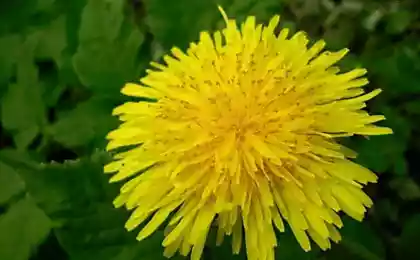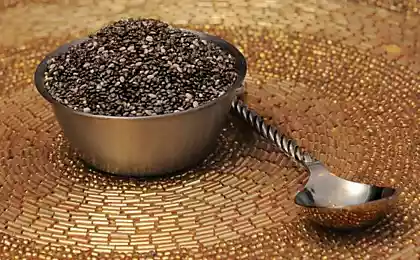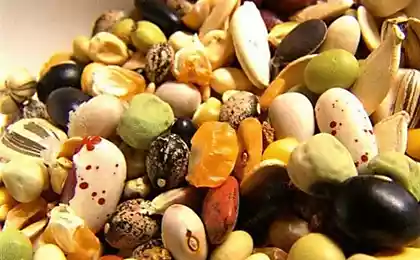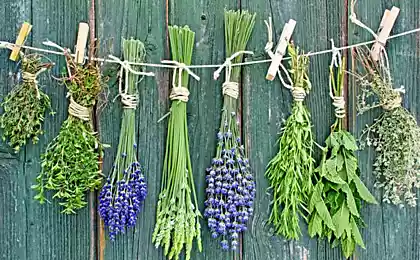564
Integrated weed control.
According to the group of researchers of agriculture, excessive dependence in the control of weeds on farms of the United States from the herbicide glyphosate has led to the tremendous growth in the number of genetically resistant weeds. The solution lies in a comprehensive program of weed control.
"I am deeply concerned about forecasts that in the next decade the volume of use of herbicides can be doubled," says David Mortensen, Professor of weed ecology at the University of Pennsylvania.

Since the mid-1990s, the company producing seeds of agricultural crops, developed and implemented in the market seeds which have been genetically modified to withstand herbicides such as Roundup — glyphosate – as a more generic method of weed control, says Mortensen. About 95 percent of today's crops modified by introducing into plants herbicide-tolerant genes.
"We understand why farmers use complexes of glyphosate with crops that are resistant to it," explains Mortensen. "It's easy and relatively cheap, but we need to take into account the long-term consequences."
The researchers warn that increased use of herbicide leads to a greater number of types of weeds that are also resistant to chemicals.
They published their findings in the current issue of BioScience, noting that 21 species of weeds have developed resistance to multiple herbicides based on glyphosate, 75 percent of which was recorded after 2005, despite the fact that sponsored by companies, the study argued about the emergence of resistance.
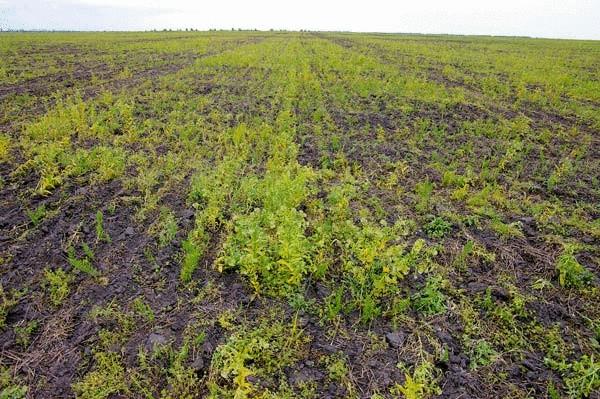
"Several species have developed amazing ways of resistance to the effects of herbicide," says J. Franklin Egan, doctoral student in ecology at the University of Pennsylvania. "If the problem of weeds will be solved only with herbicides, evolution will win."
One way of developing weed resistance is production of an enzyme that is insensitive to the herbicide, but still maintains cellular function, says Egan. Weeds have also developed ways of removing herbicide from the necessary enzymes.
"For example, glyphosate-tolerant varieties of Conyza canadensis – canadian maloletnice – isolated glyphosate in leaf tissues subjected to spraying with herbicide, so glyphosate can slowly move through the plant at nontoxic concentrations," explains Egan. "For canadian maloletnice this controlled move process means the difference between taking a few shots of whiskey on an empty stomach and sipping wine with the food."
In response to the increasing number of weeds resistant to current herbicides, the companies develop a new generation of seeds genetically modified for resistance to multiple herbicides. According to the researchers, it is a continuous inclusion of more genes into crops is not a sustainable solution to the problem of resistance to herbicides. They add that companies are creating, redban genetic modification, similar to pesticide, redban, tested in the mid-20th century, when companies produced increasingly more toxic substances to cope with resistance of pests to pesticides.

"So, several companies are actively developing crops resistant to glyphosate, 2, 4-D (2,4-dichlorophenoxyacetic acid) and dicamba," says Mortensen. "Such genetic manipulation make possible the use on these crops herbicides, which kill or damage plants. Even more worryingly, 2,4-D and dicamba is an older and less friendly to environment pesticides."
Egan believes that trevanny answer there are several problems. First, the weeds eventually develop resistance to combined dicamba, 2, 4-D and glyphosate. Globally already, there are many examples of weeds simultaneously resistant to two or more herbicides.
Increased use of 2, 4-D and dicamba to the growing corn and soybean means much more of the herbicides will be made at that time of year when many sensitive crops like tomato and grapes are most susceptible to damage. Such damage occurs when herbicides move with the outlined fields during or after application.
Abuse of chemical weed killers may increase the likelihood that farmers will use the herbicide during inappropriate or non-recommended weather conditions, leading to movement of herbicides from target areas and destroy or damage other plants and crops.
Egan also added that if the farms fall into excessive dependence on herbicides, farmers will be more complex approach of integrated weed control.
Integrated control of weeds includes planting cover crops, rotating crops and using mechanical methods of weed control. In this control method farmers can use herbicides, but targeted, reasonable way.
Researchers who also worked on the document: Bruce D. Maxwell, Professor of land resources and environment, University of Montana, Matthew R. Ryan, post-doctoral fellow studying at the University of Pennsylvania, and Richard G. Smith, assistant Professor in Agroecology at the University of new Hampshire, said that in previous studies, integrated weed control reduced herbicide use by 94 percent, while net profit.
Source: /users/104
"I am deeply concerned about forecasts that in the next decade the volume of use of herbicides can be doubled," says David Mortensen, Professor of weed ecology at the University of Pennsylvania.

Since the mid-1990s, the company producing seeds of agricultural crops, developed and implemented in the market seeds which have been genetically modified to withstand herbicides such as Roundup — glyphosate – as a more generic method of weed control, says Mortensen. About 95 percent of today's crops modified by introducing into plants herbicide-tolerant genes.
"We understand why farmers use complexes of glyphosate with crops that are resistant to it," explains Mortensen. "It's easy and relatively cheap, but we need to take into account the long-term consequences."
The researchers warn that increased use of herbicide leads to a greater number of types of weeds that are also resistant to chemicals.
They published their findings in the current issue of BioScience, noting that 21 species of weeds have developed resistance to multiple herbicides based on glyphosate, 75 percent of which was recorded after 2005, despite the fact that sponsored by companies, the study argued about the emergence of resistance.

"Several species have developed amazing ways of resistance to the effects of herbicide," says J. Franklin Egan, doctoral student in ecology at the University of Pennsylvania. "If the problem of weeds will be solved only with herbicides, evolution will win."
One way of developing weed resistance is production of an enzyme that is insensitive to the herbicide, but still maintains cellular function, says Egan. Weeds have also developed ways of removing herbicide from the necessary enzymes.
"For example, glyphosate-tolerant varieties of Conyza canadensis – canadian maloletnice – isolated glyphosate in leaf tissues subjected to spraying with herbicide, so glyphosate can slowly move through the plant at nontoxic concentrations," explains Egan. "For canadian maloletnice this controlled move process means the difference between taking a few shots of whiskey on an empty stomach and sipping wine with the food."
In response to the increasing number of weeds resistant to current herbicides, the companies develop a new generation of seeds genetically modified for resistance to multiple herbicides. According to the researchers, it is a continuous inclusion of more genes into crops is not a sustainable solution to the problem of resistance to herbicides. They add that companies are creating, redban genetic modification, similar to pesticide, redban, tested in the mid-20th century, when companies produced increasingly more toxic substances to cope with resistance of pests to pesticides.

"So, several companies are actively developing crops resistant to glyphosate, 2, 4-D (2,4-dichlorophenoxyacetic acid) and dicamba," says Mortensen. "Such genetic manipulation make possible the use on these crops herbicides, which kill or damage plants. Even more worryingly, 2,4-D and dicamba is an older and less friendly to environment pesticides."
Egan believes that trevanny answer there are several problems. First, the weeds eventually develop resistance to combined dicamba, 2, 4-D and glyphosate. Globally already, there are many examples of weeds simultaneously resistant to two or more herbicides.
Increased use of 2, 4-D and dicamba to the growing corn and soybean means much more of the herbicides will be made at that time of year when many sensitive crops like tomato and grapes are most susceptible to damage. Such damage occurs when herbicides move with the outlined fields during or after application.
Abuse of chemical weed killers may increase the likelihood that farmers will use the herbicide during inappropriate or non-recommended weather conditions, leading to movement of herbicides from target areas and destroy or damage other plants and crops.
Egan also added that if the farms fall into excessive dependence on herbicides, farmers will be more complex approach of integrated weed control.
Integrated control of weeds includes planting cover crops, rotating crops and using mechanical methods of weed control. In this control method farmers can use herbicides, but targeted, reasonable way.
Researchers who also worked on the document: Bruce D. Maxwell, Professor of land resources and environment, University of Montana, Matthew R. Ryan, post-doctoral fellow studying at the University of Pennsylvania, and Richard G. Smith, assistant Professor in Agroecology at the University of new Hampshire, said that in previous studies, integrated weed control reduced herbicide use by 94 percent, while net profit.
Source: /users/104





